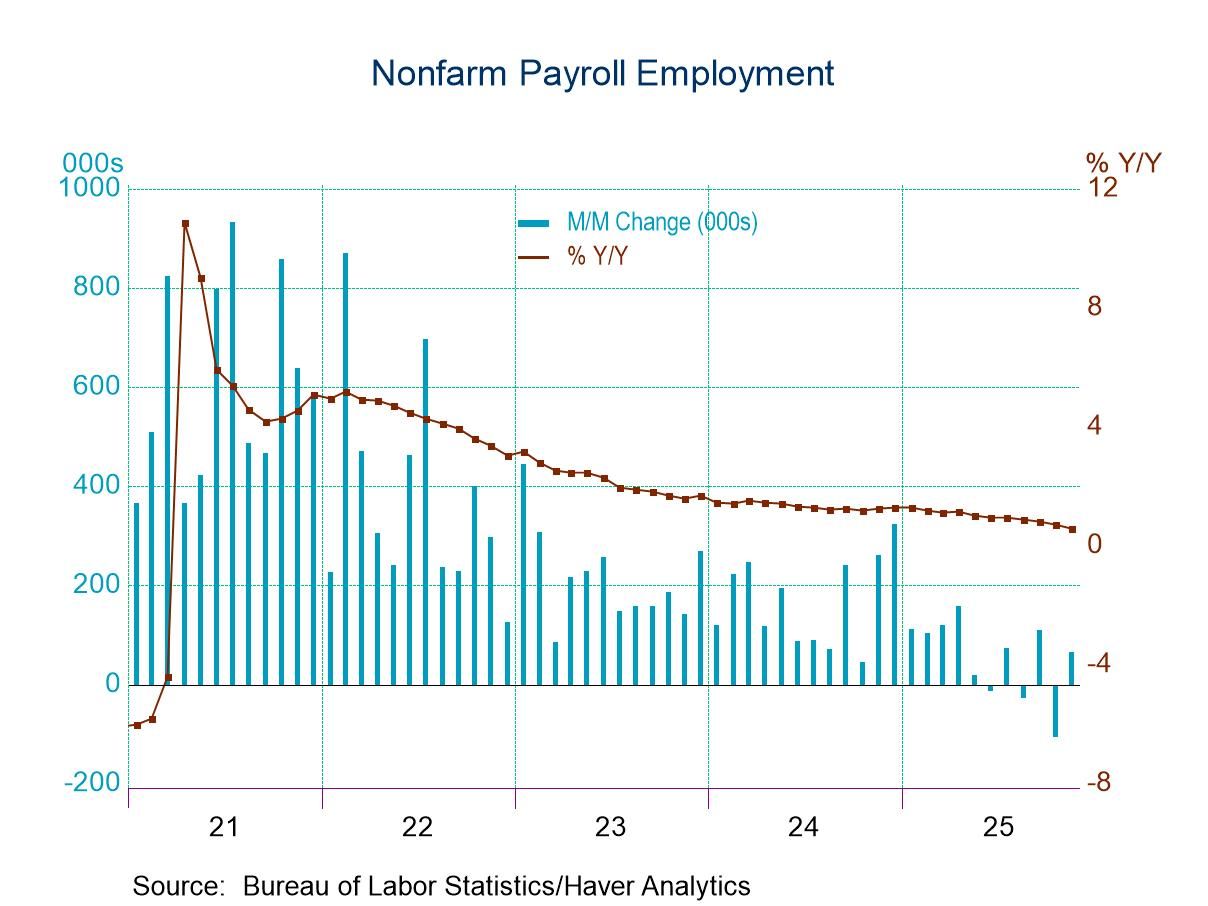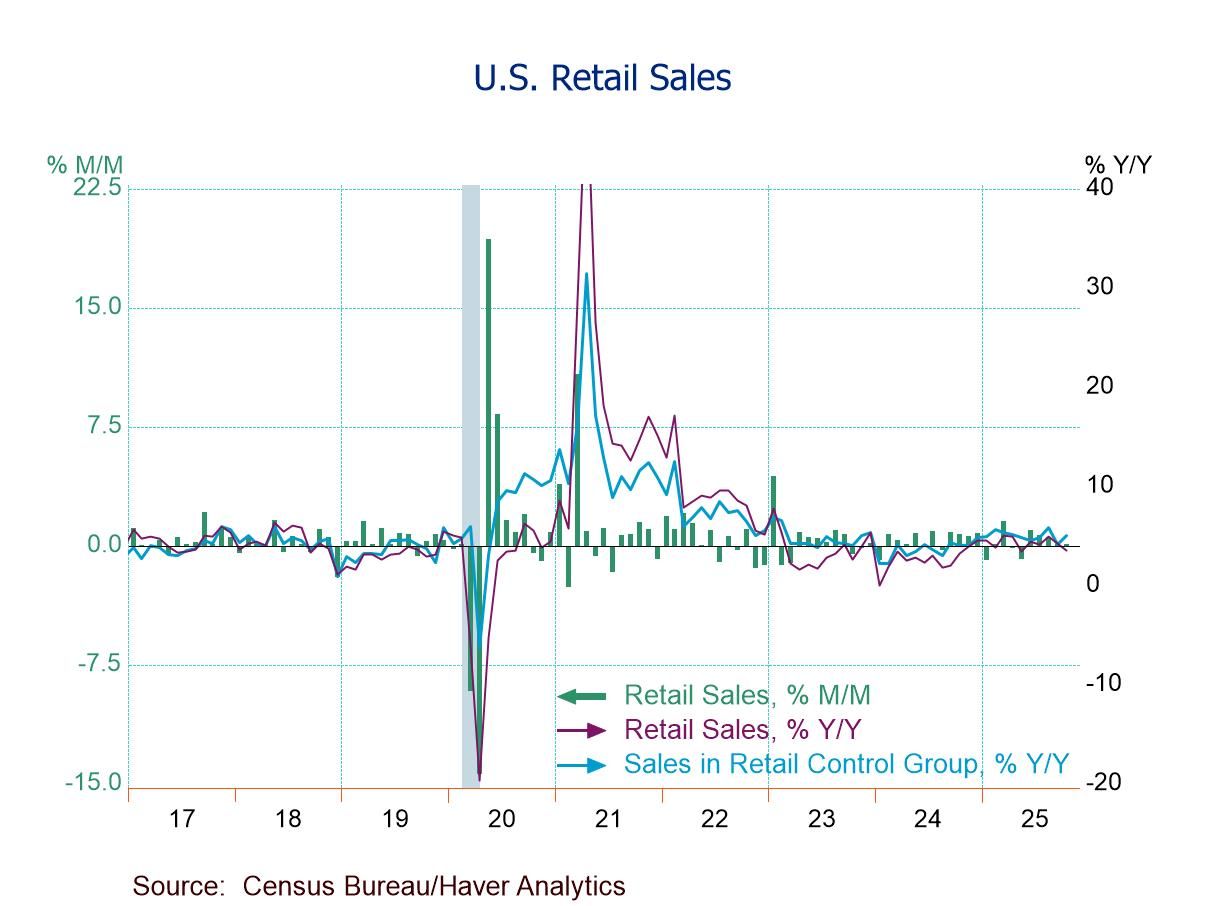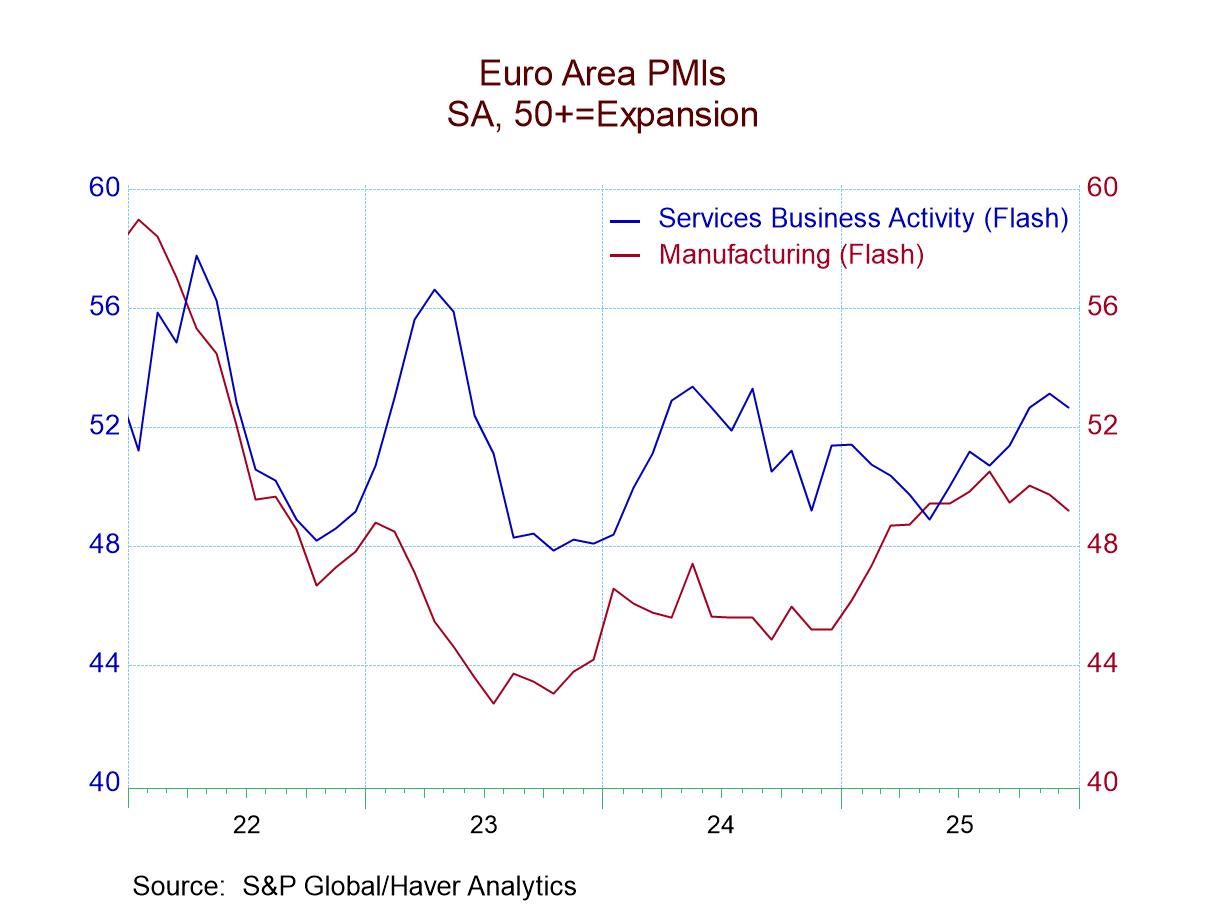U.S. CPI Inflation Edges Up in December
by:Sandy Batten
|in:Economy in Brief
Summary
- Headline index rose 0.3% m/m, pushing the y/y rate up to 3.4% from 3.1% in November.
- About half of monthly increase due to 0.5% m/m increase in shelter prices.
- Core index also rose 0.3% m/m with the y/y rate slipping to 3.9% from 4.0%.


The Consumer Price Index increased 0.3% m/m (3.4% y/y) in December following a 0.1% m/m (3.1% y/y) gain in November. The core index (that is excluding food and energy prices) also rose 0.3% m/m (3.9% y/y) in December versus 0.3% m/m (4.0% y/y) in November. The 3.9% y/y reading was the lowest since May 2021. The Action Economics Forecast survey had looked for a 0.2% monthly increase in the headline and a 0.3% m/m rise in the core index. While the y/y core rate declined throughout 2023, the y/y headline rate, after declining during the first half of the year, has been fluctuating in a range (3.2%-3.7%) since June.
Over the past six months, the headline index has risen at a 3.3% annual rate and the core index has increased at a 3.2% annual pace. The Federal Reserve targets a 2% rate for the PCE price index. This translates into a target of around 2-1/4% for the CPI. So, while CPI inflation is well off its recent highs reached in 2022, it remains well above the Fed’s target.
The Bureau of Labor Statistics estimated that a 0.5%m/m (6.2% y/y) increase in the price of shelter, the largest monthly gain in three months, accounted for more than half of the December monthly gain in the total CPI. Accordingly, the CPI less food, energy and shelter, another measure of core pricing power, rose 0.2% last month, the same monthly rise as in November, with the y/y rate edging up to 2.2% from 2.1%. In the 24 months prior to the pandemic, this measure averaged 1.4% y/y.
Energy prices rose 0.4% m/m (-2.0% y/y) in December after having fallen in both October and November. Gasoline prices edged up 0.2% m/m versus a 5.0% decline in October and a 6.0% fall in December. Electricity prices rose 1.3% m/m in December, their fifth consecutive monthly gain. By contrast, the price of natural gas slipped 0.4% m/m, the first decline in three months, while the price of fuel oil declined 5.5%, its third consecutive monthly decline.
Food prices increased 0.2% m/m (2.7% y/y) in December, the same monthly gain as in November. The y/y increase was the lowest since June 2021. The index for prices of food at home edged up just 0.1% m/m (1.3% y/y) in December, the same monthly rise as in November. By contrast, the prices of food away from home rose 0.3% m/m (5.2% y/y). Four of the six major grocery store food group indexes increased over the month. The index for meats, poultry, fish, and eggs rose 0.5% m/m in December, led by an 8.9% m/m increase in the index for eggs, after a 0.2% m/m decline in November.
Elevated service prices continued to lift the core CPI. Prices of commodities less food and energy were unchanged in December (+0.2% y/y). The unchanged reading in December reflected increases in prices of apparel, new vehicles (the first increase in three months) and used vehicles (the second consecutive monthly increase after five monthly declines) offset by declines in medical care commodities (the first decline in three months) and tobacco (the first monthly decline since December 2022). By contrast, prices of services less energy increase 0.4% m/m (5.3% y/y) in December, led by a 0.5% m/m (6.2% y/y) increase in shelter prices. Medical care services prices rose 0.7% m/m following a 0.6% m/m gain in November while prices of transportation services edged up 0.1% on top of a 1.1% monthly jump in November. This reflected a decline in motor vehicle repair costs but rises in airfares and motor vehicle insurance prices.
The Consumer Price figures can be found in Haver’s USECON database. The expectations figure is contained in the AS1REPNA database.


Sandy Batten
AuthorMore in Author Profile »Sandy Batten has more than 30 years of experience analyzing industrial economies and financial markets and a wide range of experience across the financial services sector, government, and academia. Before joining Haver Analytics, Sandy was a Vice President and Senior Economist at Citibank; Senior Credit Market Analyst at CDC Investment Management, Managing Director at Bear Stearns, and Executive Director at JPMorgan. In 2008, Sandy was named the most accurate US forecaster by the National Association for Business Economics. He is a member of the New York Forecasters Club, NABE, and the American Economic Association. Prior to his time in the financial services sector, Sandy was a Research Officer at the Federal Reserve Bank of St. Louis, Senior Staff Economist on the President’s Council of Economic Advisors, Deputy Assistant Secretary for Economic Policy at the US Treasury, and Economist at the International Monetary Fund. Sandy has taught economics at St. Louis University, Denison University, and Muskingun College. He has published numerous peer-reviewed articles in a wide range of academic publications. He has a B.A. in economics from the University of Richmond and a M.A. and Ph.D. in economics from The Ohio State University.






